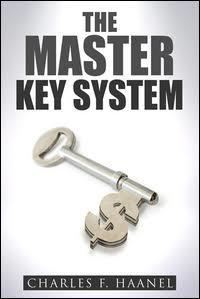8.4 /10 1 Votes8.4
Language English Publication date 1916 ISBN 978-1-61720-383-1 Genre Non-fiction | 4.2/5 Goodreads Publisher Psychology Publishing Pages 138 Originally published 1916 Page count 138 Country United States of America | |||||||||||||||||||||||||||||||||
 | ||||||||||||||||||||||||||||||||||
Similar Charles F Haanel books, Non-fiction books, Psychology books | ||||||||||||||||||||||||||||||||||
The master key system charles f haanel a loa course
The Master Key System is a personal development book by Charles F. Haanel (1866-1949) that was originally published as a 24-week correspondence course in 1912, and then in book form in 1916. The ideas it describes and explains come mostly from New Thought philosophy. It was one of the main sources of inspiration for Rhonda Byrne's film and book The Secret (2006).
Contents
- The master key system charles f haanel a loa course
- General description
- Exercises
- Themes
- Influence
- Variations
- Quotations
- Derivative works
- Other books by Haanel
- References
General description
The book describes many New Thought beliefs such as the law of attraction, creative visualization and man's unity with God, and teaches the importance of truth, harmonious thinking and the ability to concentrate. Each of the 24 chapters contains an introduction, followed by a sequentially numbered section which includes an exercise towards the end, followed by a section with questions and answers. At the beginning of the book is a Psychological Chart which readers are encouraged to complete, providing a self-evaluation of their creative power, time efficiency, health, mental ability and capacity to concentrate. The book ends with a glossary and general question-and-answers section. Every chapter includes a quotation from people such as Jonathan Edwards, Lilian Whiting and Amos Bronson Alcott.
Exercises
Each chapter ends with an exercise which the reader is encouraged to undertake every day for the following 4–7 days. The exercises are meditations that require the reader to first sit comfortably in a chair.
The sequence of exercises in each chapter is as follows:
- Sitting still
- Inhibiting all thought combined with previous exercise
- Releasing physical tension combined with previous exercises
- Letting go of all negative emotions combined with previous exercises
- Visualising a pleasant place
- Remembering details from a photo of someone
- Visualising positive facial expressions on the face of a friend
- Visualising everything that leads to the construction of a battleship
- Visualising a flower growing from seed
- Visualising certain geometric forms
- Concentrating on a quote from the Bible; Mark 11:24
- Contemplating your unity with Omnipotence
- Contemplating being part of the Whole
- Focusing on harmony
- Contemplating the fact that knowledge needs to be applied to be useful
- Contemplating that happiness and harmony are states of consciousness
- Focusing on the object of your desire
- Focusing on your power to create – create a logical basis for your faith
- Total concentration on what you want
- Focusing on "In Him we live and move and have our being"
- Focusing on truth
- Concentration on a Tennyson quote: "Speak to Him, thou, for He hears, and spirit with spirit can meet, Closer is He than breathing, and nearer than hands and feet."
- Contemplating the fact that man is a spirit with a body
- Realising that this is a wonderful world
Themes
The ideas behind the book mainly come from New Thought philosophy, but there are influences from other sources such as Hinduism, Masonic and Rosicrucian teachings, Theosophy, and the Bible.
Influence
Along with The Science of Getting Rich, by Wallace D. Wattles, The Master Key System inspired much of the content of Rhonda Byrne's film The Secret (2006), which was later followed by a book of the same name.
It is claimed that Charles Haanel received a letter in 1919 from Napoleon Hill, who later went on to write one of the best-selling books of all time, Think and Grow Rich, saying that his own success was due to the principles laid down in The Master Key System.
Variations
There are many editions of the book. Modern editions mostly do not include the 3-part introduction, the psychological chart, the question-and-answers section at the end of the book, or the glossary. Some modern editions also include 4 additional chapters which come from chapters 11-14 of another book Haanel wrote called A book about you. The first British Empire edition, printed in 1933 by The Master Key Publishing Company, is called The Master Key with no mention of the word "system".
Quotations
The book contains many quotations. Some are printed at the end of chapters while others are in the main body of the text. This list shows all the people quoted in the 1919 edition, and the chapter or part of the book in which the quotes are found. Some editions arrange the quotations in slightly different orders and some have quotes that do not appear in the 1919 edition; for example, many have a quote by Benjamin Disraeli at the end of chapter 23.
In addition to these quotations, the book quotes the Bible 23 times.
Derivative works
Other books by Haanel
Note, Master Key System and Mental Chemistry, being published prior to 1923, are considered to be in public domain, but several of his other books, being currently in distribution, are still covered by copyright law timeframe.
